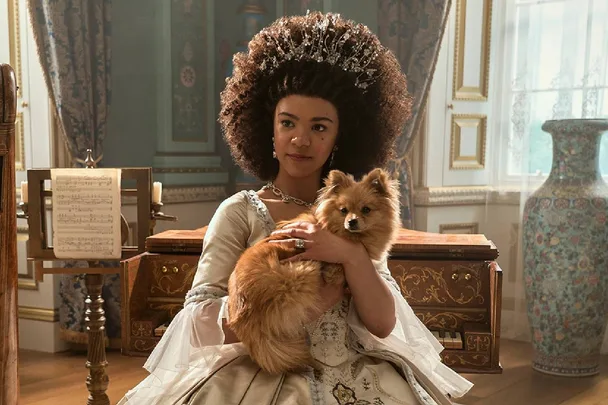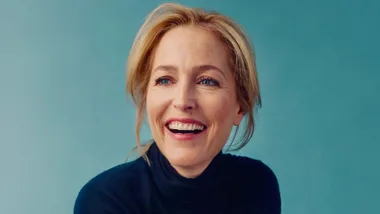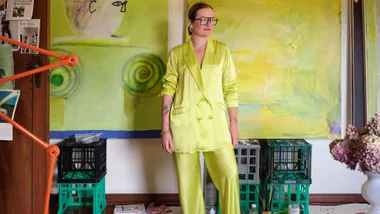Despite being set in a historical period, most of Bridgerton’s characters are entirely fictional—that is, apart from the formidable Queen Charlotte.
The character, who was not part of the popular book series by Julia Quinn, was based on a real-life monarch, who also happened to be the great-great-great-great grandmother of the present King Charles.
With the release of Netflix’s spin-off series, Queen Charlotte: A Bridgerton Story our attention has turned back to the character and her real life counterpart.
From her 15 children to obsession with Pomeranian dogs, here’s everything you need to know about the fascinating Queen Charlotte.
Queen Charlotte May Have Been The First Black British Monarch
There has long been a theory that Queen Charlotte was the first Black British royal, according to the genealogical research of historian Mario De Valdes y Cocom, who began his studies in 1967, according to the Washington Post.
“Queen Charlotte, wife of the English King George III (1738-1820), was directly descended from Margarita de Castro y Sousa, a Black branch of the Portuguese Royal House,” Valdes wrote for PBS’ Frontline
According to the Washington Post, Valdes revealed that Portuguese royal Alfonso III’s mistress, Ouruana, was a woman of colour. He also pointed out how Charlotte’s physician used the outdated and offensive term “mulatto” to describe her appearance. Additionally, a prime minister depicted her in a racist manner through a description of her facial features, writing: “Her nose is too wide and her lips too thick.”
Through observation of various portraits of Queen Charlotte, Valdes also noted that she was depicted with a darker skin tone and curly hair.

“Six different lines can be traced from English Queen Charlotte back to Margarita de Castro y Sousa, in a gene pool which because of royal inbreeding was already minuscule, thus explaining the Queen’s unmistakable African appearance,” he wrote. “The… characteristics of the Queen’s portraits certainly had political significance since artists of that period were expected to play down, soften or even obliterate undesirable features in a subjects’ face.”
However, despite Valdes’s research, which featured outdated and offensive language, other historians disputed his findings.
“The word ‘blackamoor’ in Shakespeare’s time meant Muslim,” University of Pennsylvania professor Ania Loomba told The Philadelphia Inquirer. “It didn’t mean Black necessarily. Moors could be white from North Africa.”
As for the Palace’s thoughts on the discussion, a spokesman told The Boston Globe: “This has been rumoured for years and years. It is a matter of history, and frankly, we’ve got far more important things to talk about.”
She Had An Obsession With Pomeranian Dogs
Much like Queen Elizabeth’s penchant for Corgis, Queen Charlotte supposedly took a liking to Pomeranians, bringing two of them with her when she moved to England. The pair, named Phoebe and Mercury, were later captured by Thomas Gainsborough in a royal portrait and in later years, she frequently gifted dogs to her courtiers, keeping her own Pomeranians around her in her rooms. Her son, King George IV, and his daughter, Queen Victoria, both inherited her love for the dog breed—with Victoria even starting a dedicated breeding program.
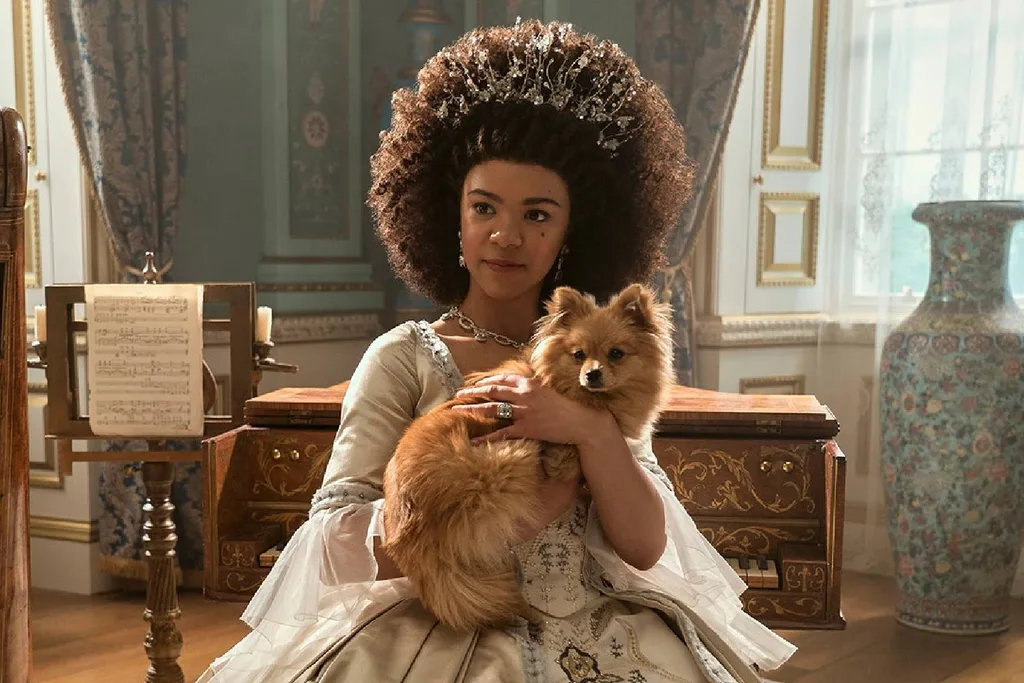
Queen Charlotte Had 15 Children
Born as Sophia Charlotte of Mecklenburg-Strelitz to a German duke and princess on May 19, 1744, Queen Charlotte became queen of Britain and Ireland after marrying King George III in London in September 1761.
Only 17-years-old at the time of her marriage, Queen Charlotte went on to give birth to 15 children, with 13 surviving until adulthood.
As mentioned in a dinner conversation between the Queen and King in the show’s fifth episode, “The Duke and I”, their youngest child, Princess Amelia, died at age 27 in 1810—just three years before Bridgerton takes place. However, their 13th and 14th children, Prince Octavius and Prince Alfred, died at ages four and two respectively.
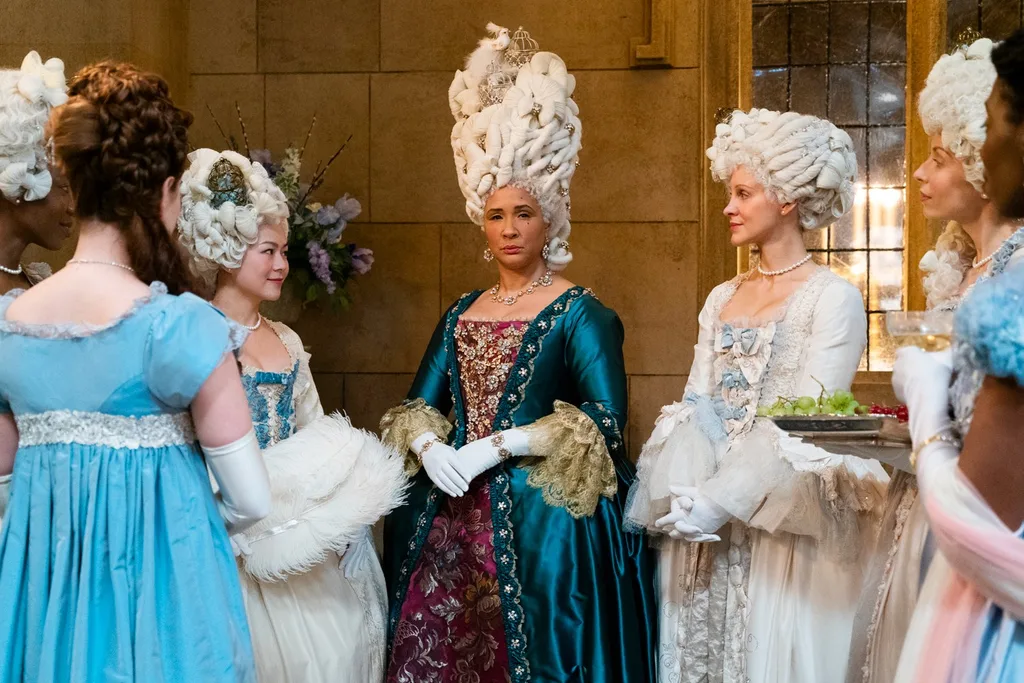
As Bridgerton shows, Queen Charlotte truly did “discover” Mozart
King George III was the founder of the Royal Academy of the Arts, and he and Queen Charlotte first bonded over their shared passion for music. An accomplished harpsichord player, Charlotte was one of the first to discover famous composer Mozart. As stated in the second episode of Bridgerton, Rosheuvel’s Queen Charlotte confidently declares to Violet Bridgerton: “I became acquainted with Mr. Mozart when he was not 10 years old. The boy accompanied me as I sang an aria, and I declared then and there that he should become one of the finest composers in Europe.”
According to the Royal Collection trust, an 8-year-old Wolfgang Amadeus Mozart performed for the royals during a visit to England, while Olwen Hedley’s biography about the queen confirms that Charlotte sang while the young musical genius played the organ. A year later, Mozart dedicated his Opus 3 to Charlotte and would go on to dedicate six sonatas to her.
She Married King George III Only Six Hours After Meeting Him
According to the royal family’s official website, the couple wed a mere six hours after Charlotte arrived in England, where they met for the first time. While it seems indicative of a “marriage market” rather than love, theirs is believed to have been one of the most successful and loving royal marriages up to that point.
They apparently doted upon each other throughout several decades of their marriage, proven by how Charlotte signed her letters to her husband as his “very affectionate wife and friend.”
Remaining married for nearly 60 years, Charlotte was deeply affected by King George’s mental and physical illnesses. Though they lived separately during this time, Charlotte remained devoted to her husband, writing in one letter, “Our separation must be and really is equally painful to us both.”
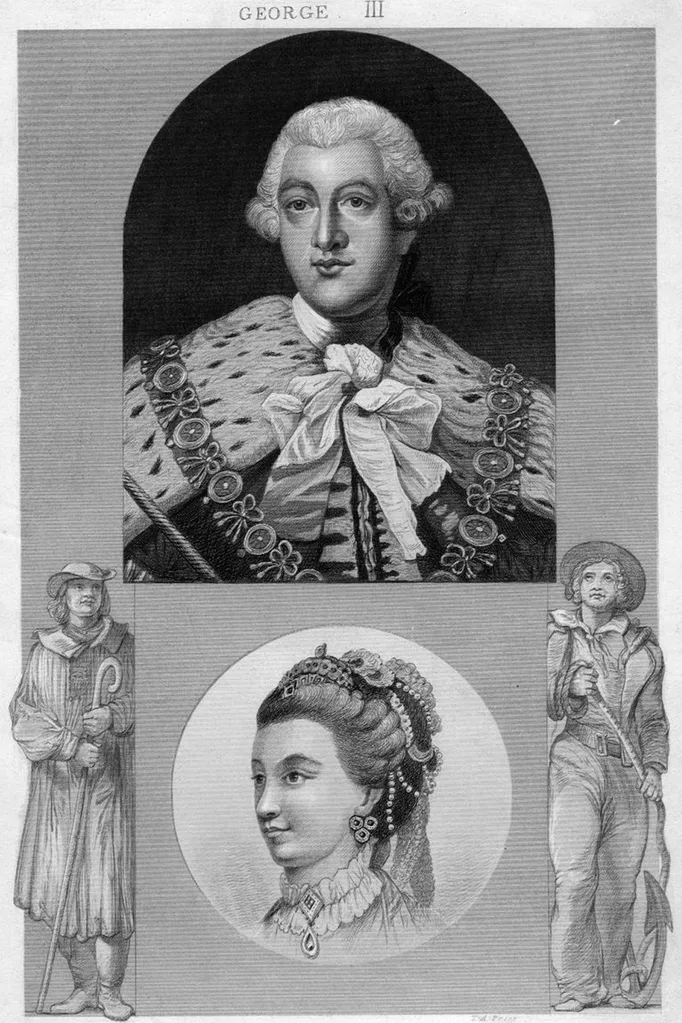
Queen Charlotte Was As Involved In Gossip As Her Character In Bridgerton
While we know that the real Queen Charlotte adored music, she also loved the matchmaking process just as much as her on-screen counterpart. George III actually established the first debutante ball in 1780 in honour of his wife’s birthday—with the so-called Queen Charlotte’s Ball held at Buckingham Palace every year until Queen Elizabeth II cancelled it in the ’50s. Even after her husband’s descent into madness, she wrote him letters recounting the gossip around the Ton, many of which can be read in the Royal Archives.
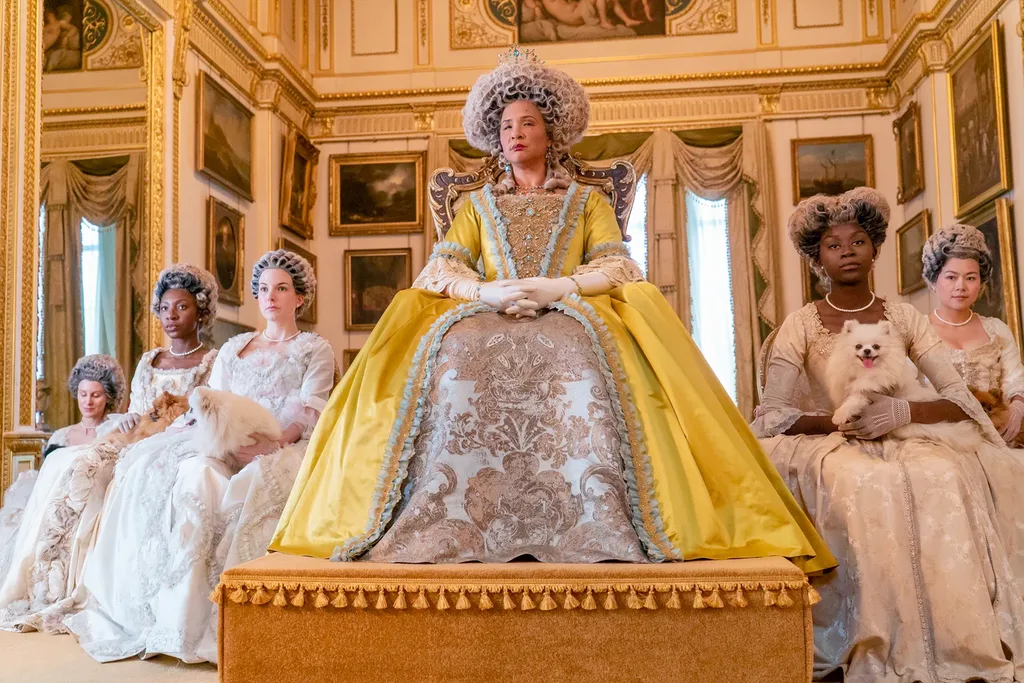
She Had An Addiction To Ground Tobacco
Much like her depiction in Bridgerton, Queen Charlotte did have a snuff addiction, keeping a dedicated room filled with ground tobacco at Windsor Castle and accumulating no less than 90 snuff boxes by the time of her death in 1818. According to the Royal Collection Trust, she used the tobacco as a means of curing her frequent headaches, counting Violet Strasbourg among her favourite blends: a “mixture of powdered rappee, bitter almonds, ambergris and attarju, which she augmented with a spoonful of green tea every morning”.
